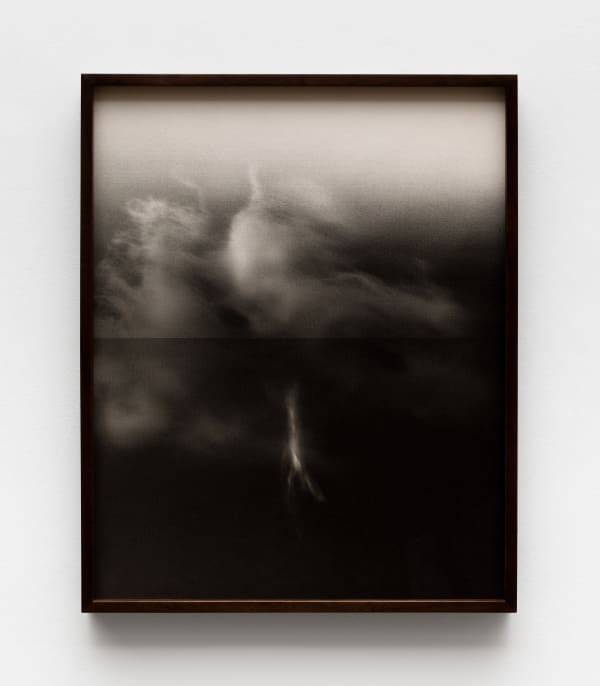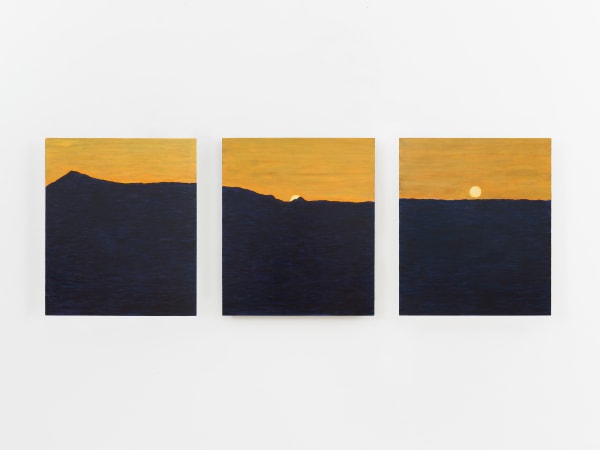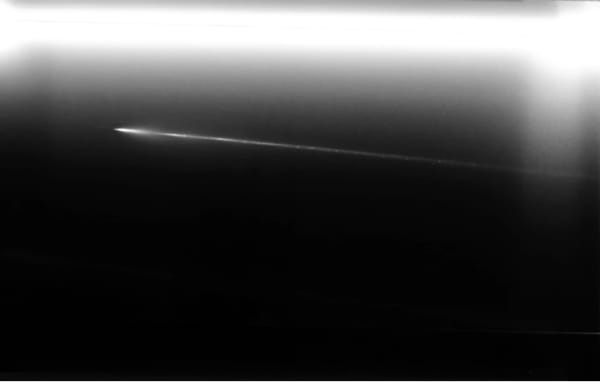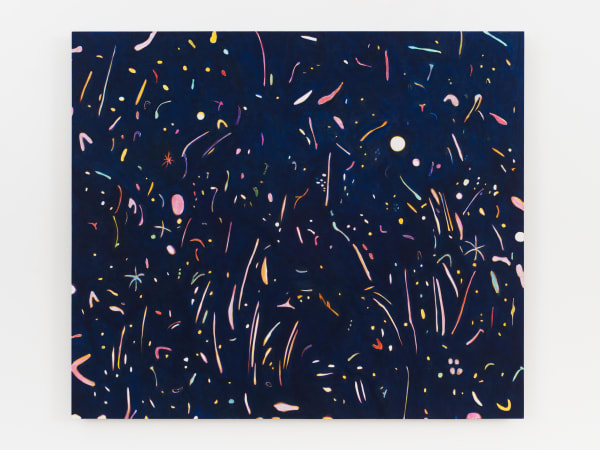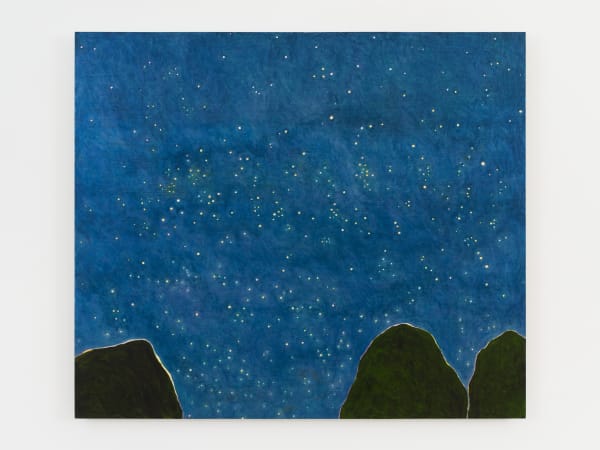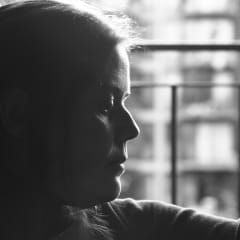Galáxias Patricia Leite & Leticia Ramos
A never-ending night falls, now giving rise to Galáxias [Galaxies], an exhibition by Patricia Leite and Leticia Ramos. The two artists present images and situations that represent or evoke skies and astronomical phenomena. The works include paintings, photographs, videos, and an installation that features clouds, constellations, the moon, eclipses, twilights, and planispheres. Some of the pieces were created in 2017 and 2018, but the majority were conceived this year, especially for this exhibition, either individually or collaboratively. This marks the first time they have joined forces for a collaborative project. One aspect of this partnership that immediately sparks curiosity is the grouping of works and trajectories that, at first glance, seem very distinct.
Patricia Leite began her career amidst the pictorial euphoria of the 1980s, creating energetic, abstract paintings characterized by intense gestures and colors with an expressionist bent. In 2000, she shifted her focus toward a simpler, more synthetic figuration, where landscapes are outlined by unusual framings that bring them closer to or further from abstraction. This is particularly evident in her tendency to distill her subjects into flat color figures, with a straightforward, unembellished execution that sometimes makes the elements in her compositions resemble components of a collage. Since the mid-2000s, she has also explored extending her pictorial thinking to formats beyond the rectangle, applying it to everyday objects like wooden bowls and other materials, such as woven threads in textiles.
Leticia Ramos’s work began gaining public recognition in the late 2000s. The artist focuses on extended projects rather than creating varied, standalone works. With a background in film, and after studying architecture and urbanism, Ramos develops action plans with medium- to long-term timelines (spanning months or years). Her projects involve several processes: conducting historical and scientific research (for example, on the 1775 Lisbon earthquake or the methods developed by Hercule Florence, one of the pioneers of photography, for observing the sky and representing clouds); creating sets and models to represent places, objects, and natural phenomena—whether existing, historically documented, or invented; and constructing or adapting technical apparatuses to produce images on photographic paper and film. Each project, therefore, requires the use of specific languages, areas of knowledge, and methods of formalization.
An experimental approach may, in this sense, connect the two bodies of work. However, what quickly becomes apparent in this comparison is the contrast between the affectivity in Patricia Leite’s paintings—especially the sensory intensity she seeks in her relationship with her subjects—and the scientific nature that marks Leticia Ramos’s work. Patricia seems to bring the elements she depicts into the very foreground of her paintings, close to the viewer’s eye, even when these subjects are distant or celestial bodies. In contrast, Ramos maintains an analytical distance in her images, which simultaneously enhances the mysterious and unknown qualities of her materials.
Even though photographic images play a significant role in the construction of many of Patricia Leite's paintings, the artist infuses her work with the force of a scopic drive. She is not interested in the technical image as something to be simply transferred or translated into pictorial language but rather for what defines it as a device: framing the world, establishing unique angles of observation, freezing time, controlling light, reaching focal distances, and revealing what the eyes cannot always see—or at least, not in the same way the technical image can. In this way, the artist transfigures the landscape into a state that is both elemental and altered.
Based on the supposed objectivity of photography, Patricia Leite simplifies the forms within her field of vision. It could be said that Patricia paints the outlines, the silhouettes of her objects, converting them into a two-dimensional plane, while modifying, intensifying, or softening colors and light through meticulous manual work—which increasingly reveals her brushstrokes—but does not aim for perfection. As a result, for instance, the contours of the figures expose the underlying layers of color from previous stages of the painting process, making the image seem to glow or vibrate. This, in turn, imparts both a certain artificiality and a touch of liveliness to her subjects, which are almost always “natural.”
Similarly, the images produced by Leticia Ramos often exhibit a certain imprecision. It is not always easy to discern what each work represents, what place it shows, what situation it captures, how and with what tools or techniques it was created, and when (to what time do these images ultimately belong?). When viewing the artist's work, it is natural to question the authenticity of what is depicted: whether it is real or imagined, whether it is a candid shot or a record of a staged, false, or fantastical situation. The use of advanced technology is presumed in her practice, as the works frequently resemble laboratory items or scientific observation tools intended for study, though without the clinical sterility of such contexts. And given the rarity of the events they depict, the works seem to act as testimonies.
For all these reasons, the artist's work straddles the line between fiction and documentation. Leticia Ramos's pieces evoke the early days of cinema and the first photographs of celestial bodies and phenomena, while also exploring contemporary film language and recent knowledge of the universe. Another paradox is that, although her work appears to use cutting-edge technology, the creation process is quite manual—not only involving the construction of machines, sets, and models but also mechanical tasks like scratching, cutting, and pasting photographic negatives. The materiality of the work creates an atmosphere of apparition, giving the images a spectral and ghostly quality; they are, ultimately, luminous impressions of distant situations (regardless of how close they might be) and seemingly on the brink of vanishing.
The exhibition's title echoes that of one of Haroldo de Campos's key poetry collections: Galáxias. In this work, written over 13 years, from 1963 to 1976, the poet, writer, and essayist presents 50 cantos, or textual fragments, in a flowing and direct style: without punctuation, paragraphs, page numbers, or distinction between prose and poetry, creating kaleidoscopic images and musicalities. With a force that spreads in all directions, Campos connects languages, mixes words, and uses various literary techniques—such as puns, double meanings, phonetic and visual repetitions, alliterations, and assonances—opening up an expansive and immeasurable dimension within the realm of language. The idea that verbal constellations are formed here, as suggested by the title, is intentional. Similarly, Leticia Ramos and Patricia Leite’s exhibition also immediately evokes this vastness and the interplay of diverse languages and elements in a gravitational dynamic.
Upon entering the gallery, one immediately sees the conjunction of the works: a full moon painted on a wooden surface (by Patricia Leite) serves as the backdrop for a video projection (by Leticia Ramos) that simulates an eclipse. This straightforward setup materializes the phenomenon by giving physical presence and substance to both the moon and the eclipse. In practice, the moon transforms into a field of projection and light emission, reflecting and radiating brightness. The luminosity initially emerges from the painting, with layers and textures of different colors adding depth and intensity to the sky and is then enhanced by the beam of light that strikes and reflects off the moon's surface, culminating in its obscuring by another image—a shadow. Thus, the representation of the lunar eclipse becomes virtually pulsating, dynamic, and almost psychedelic—partly due to the interplay between painting, cinema, and theater that the installation establishes.
The exhibition is organized as a kind of exploration into the creation of landscapes, mainly nocturnal, based on sky observation. It may also serve as an investigation into how certain equipment and techniques can reveal phenomena that the naked eye alone cannot see, or how to reimagine this intergalactic realm—comprising stars, celestial bodies, and events that serve as spatial and temporal references related to the past, the current state of the world, and what lies ahead. For instance, it might address the threat of the sky falling due to environmental catastrophe, as some Indigenous cosmologies suggest. In this sense, the exhibition could be seen as a study of intangibility—what is distant in space and time, and still beyond comprehension. The sky may not be the ultimate limit, but it is a starting point.
— José Augusto Ribeiro
-
 Leticia Ramos, Raio, 2024
Leticia Ramos, Raio, 2024 -
 Patricia Leite, Ending, 2024
Patricia Leite, Ending, 2024 -
 Leticia Ramos, Magnetic Field, 2018
Leticia Ramos, Magnetic Field, 2018 -
 Patricia Leite, Lampejo, 2024
Patricia Leite, Lampejo, 2024 -
 Leticia Ramos, Risco Final, 2024
Leticia Ramos, Risco Final, 2024 -
 Patricia Leite, No céu de Magritte, 2024
Patricia Leite, No céu de Magritte, 2024 -
 Patricia Leite, Estilhaços II, 2024
Patricia Leite, Estilhaços II, 2024 -
 Leticia Ramos, Nuvem eclipse, 2024
Leticia Ramos, Nuvem eclipse, 2024 -
 Leticia Ramos, Planisferio, 2017
Leticia Ramos, Planisferio, 2017 -
 Patricia Leite, Estilhaços, 2024
Patricia Leite, Estilhaços, 2024 -
 Patricia Leite, Constelado, 2024
Patricia Leite, Constelado, 2024 -
 Patricia Leite, Estilhaços I, 2024
Patricia Leite, Estilhaços I, 2024 -
 Patricia Leite, Início, 2024
Patricia Leite, Início, 2024 -
 Leticia Ramos, Black Panorama II, 2018
Leticia Ramos, Black Panorama II, 2018 -
 Leticia Ramos, The Blue Night, 2017
Leticia Ramos, The Blue Night, 2017 -
 Leticia Ramos, Montanha, 2024
Leticia Ramos, Montanha, 2024 -
 Leticia Ramos, Eclipse 01, 2024
Leticia Ramos, Eclipse 01, 2024 -
 Patricia Leite, Perigeu, 2024
Patricia Leite, Perigeu, 2024 -
 Patricia Leite, Galáxias, 2024
Patricia Leite, Galáxias, 2024 -
 Patricia Leite, Boreal, 2024
Patricia Leite, Boreal, 2024

